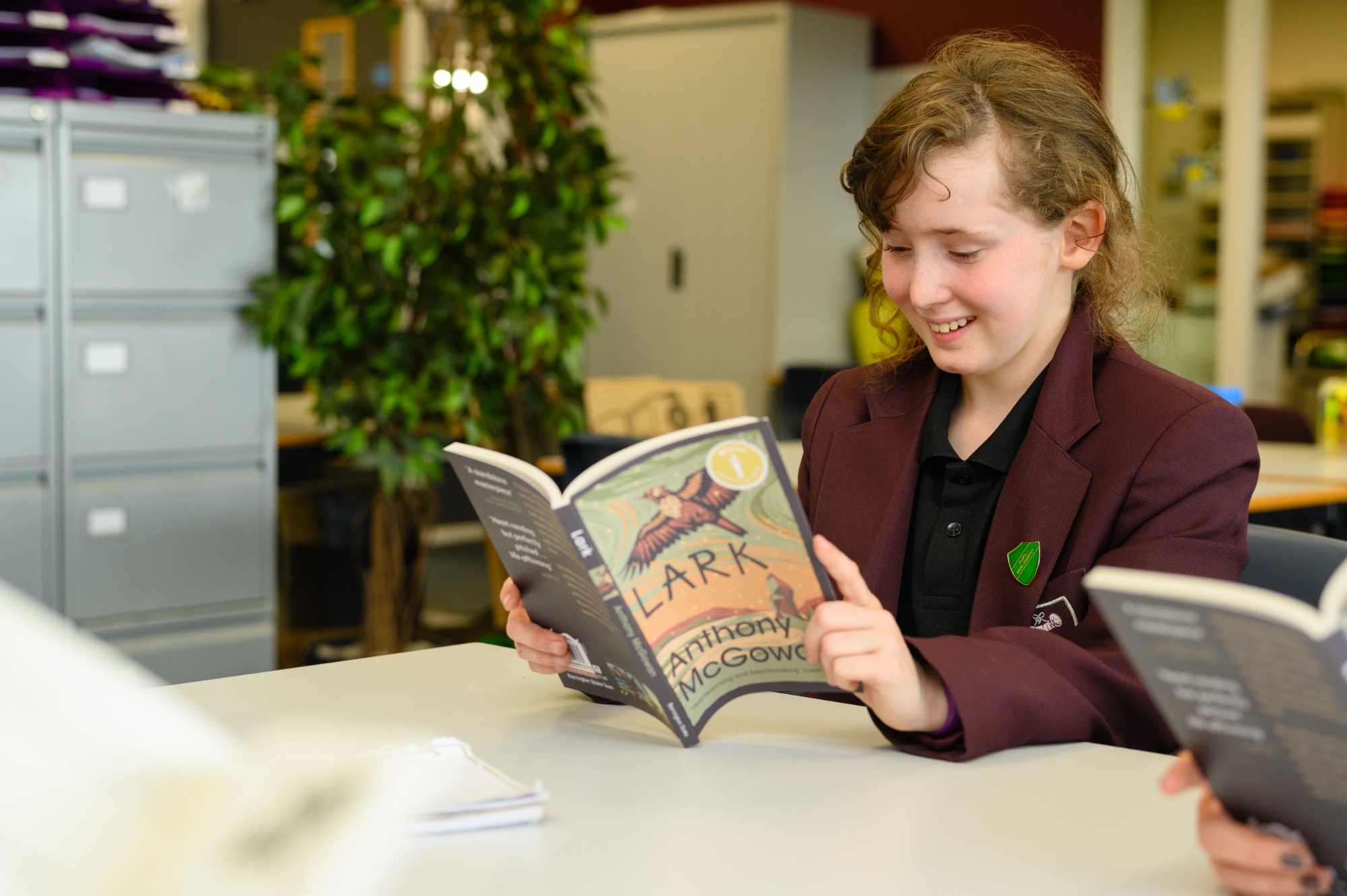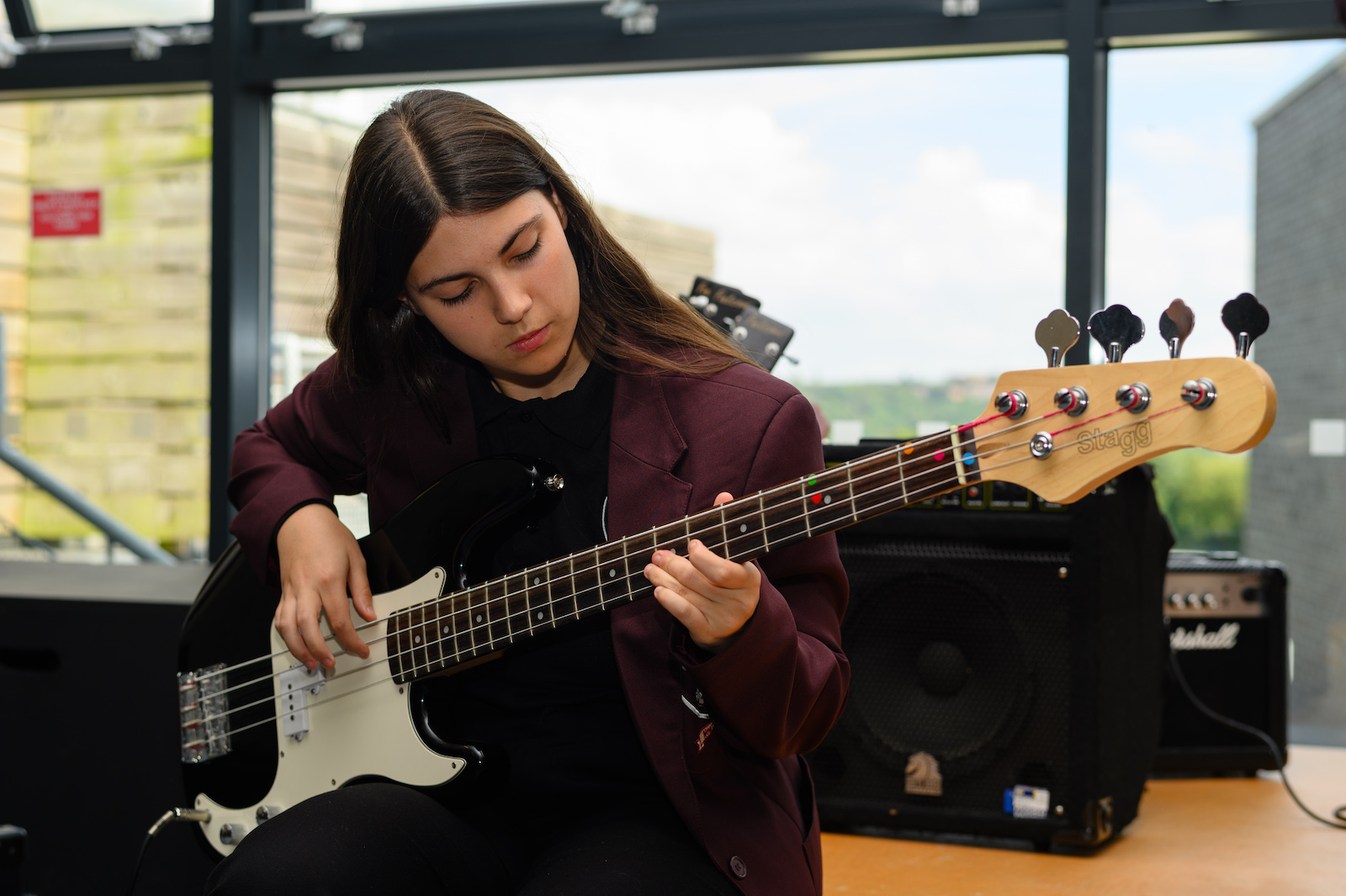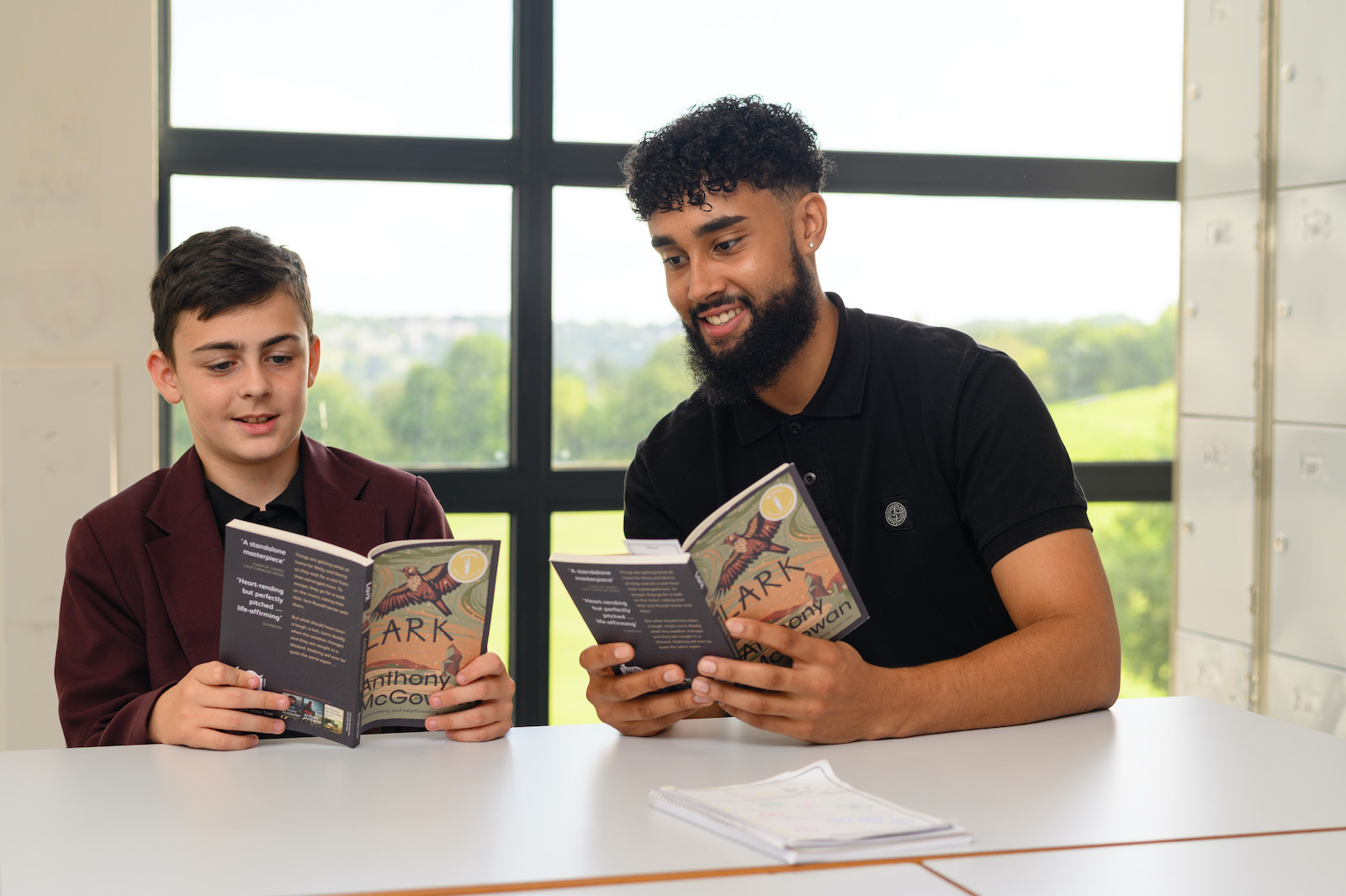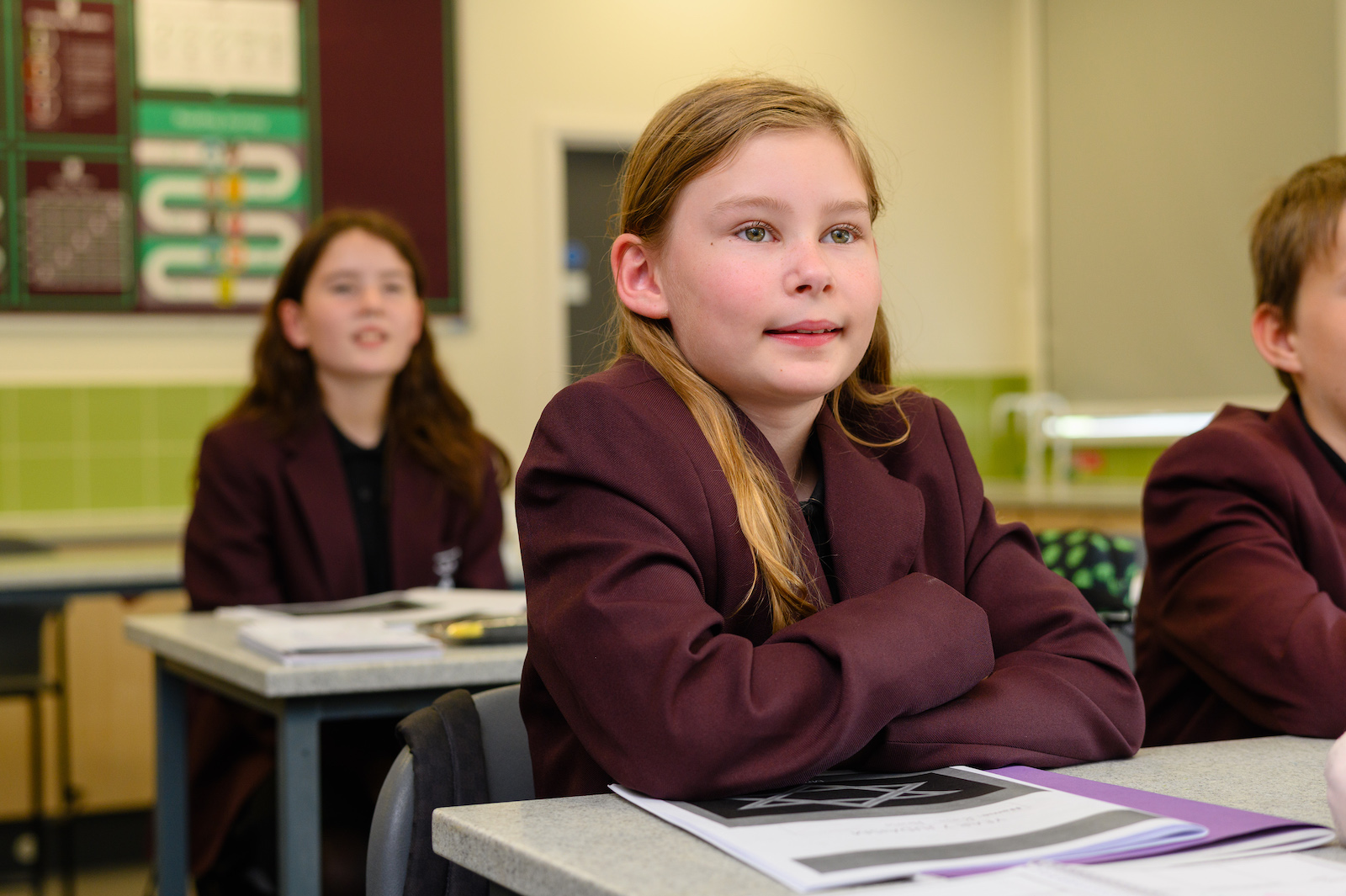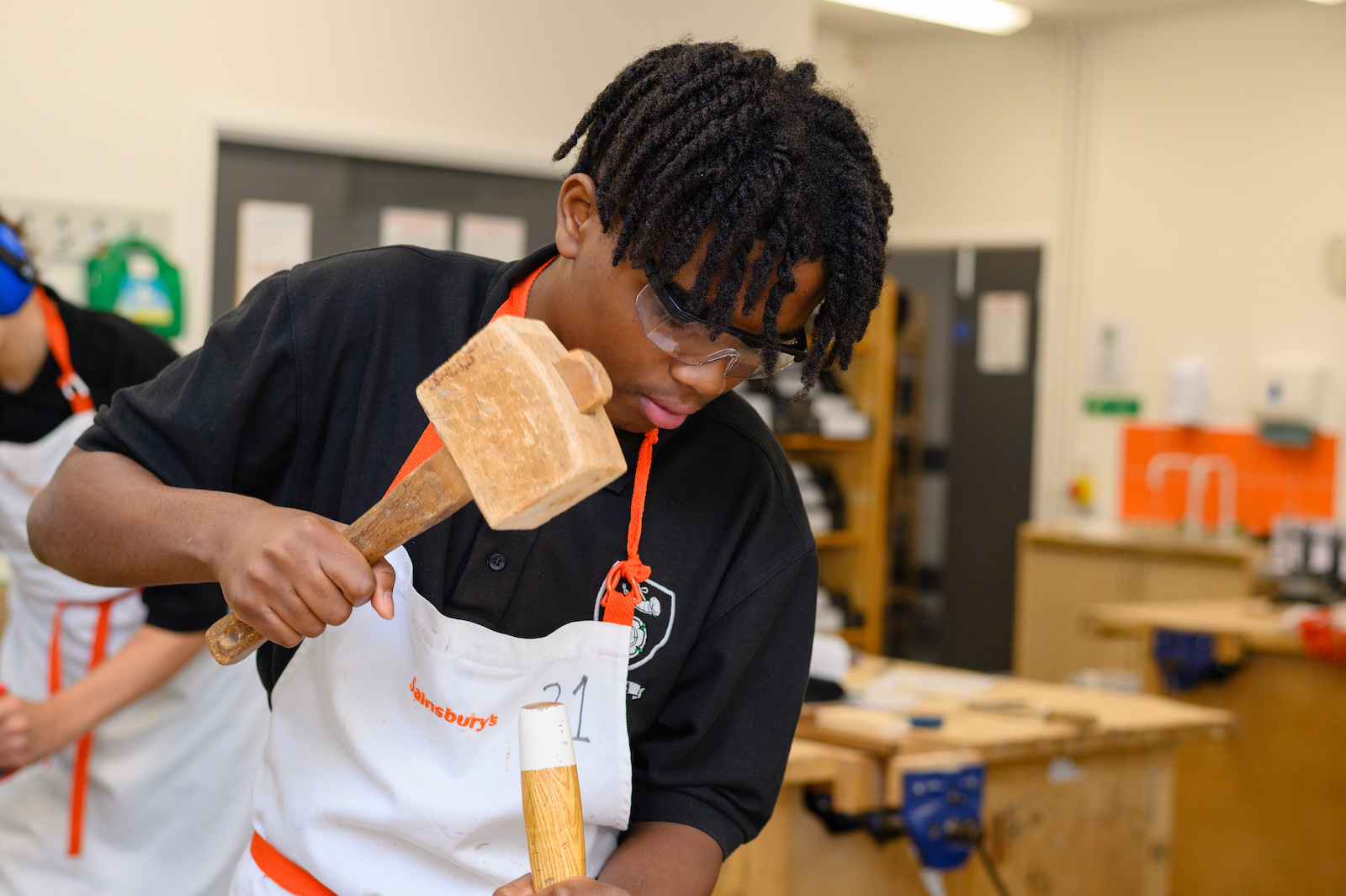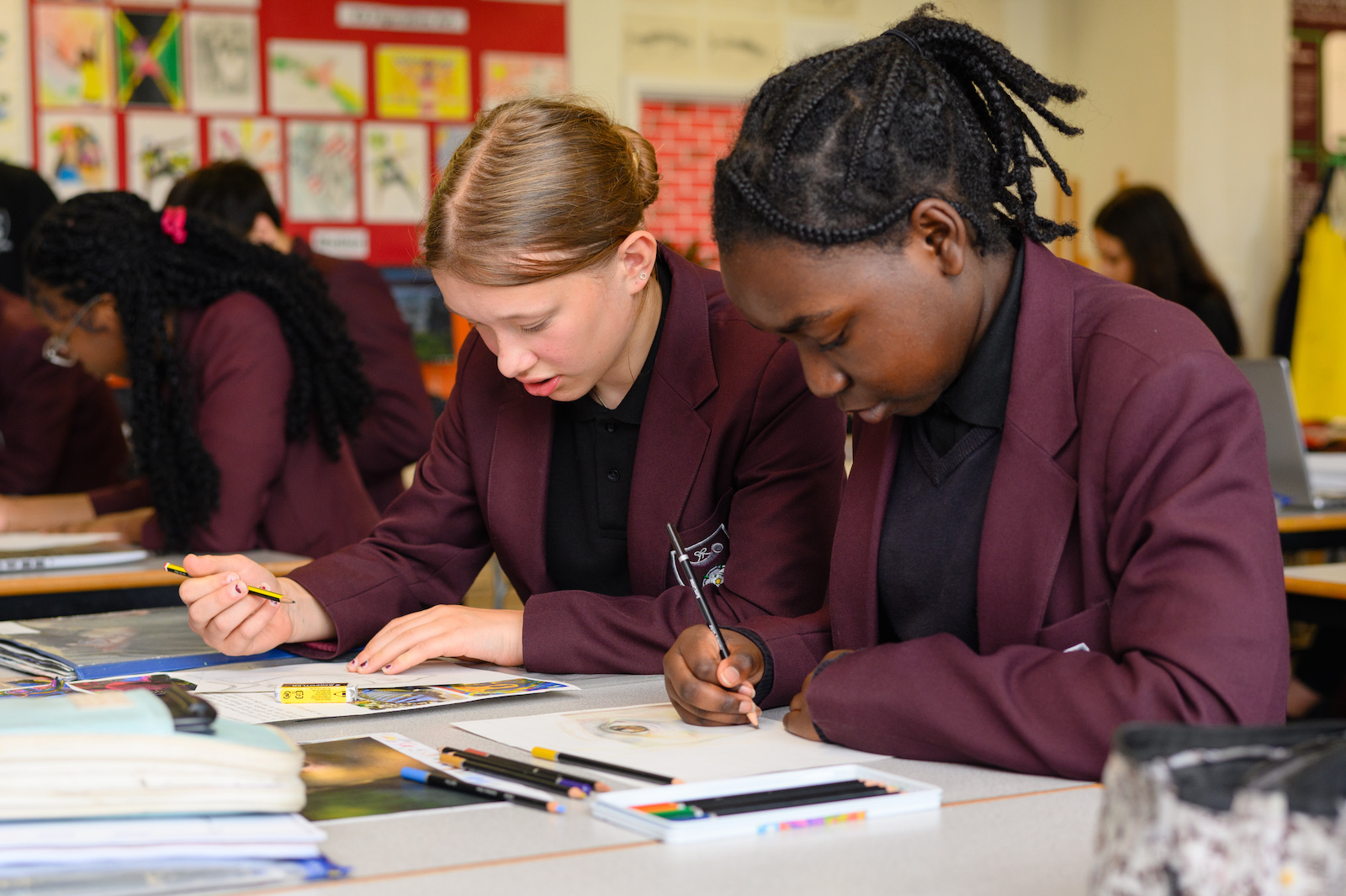Art and Design
Developing as an artist and the joy of achieving
- Learn to observe subject matter
- Developing student’s mastery and creativity with a range of media
- Understanding why artists, past and present create the work they do
Knowledge in Art
- The formal elements – Tone, line, shape /form, colour, composition, scale, texture
- Techniques – Understanding the different qualities of a range of media and the relevant tools for each one
- How to observe –Teaching drawing styles for different purposes. Working from direct observation more often
- Contextual - Historical (movements/cultural) and contemporary (including conceptual) context, including an understanding of artists techniques
- Expressing opinions and ideas – Why create art? What purpose? ‘SCAMPER’.
- Artistic terminology – Reference to their own and other artists work
Skills in Art
- Techniques – Practising different styles and approaches with different media.
- Observations – The process of choosing how to draw different subject matter:
- Mastery – creating work which aims for accuracy using the formal elements (Line, shape/forms, tone, colour, texture, composition, scale)
- Purpose – Creating work which reflects the subject matter/occasion/students’ emotions. This may include a more expressive approach which goes against the rules required to achieve mastery level.
Creativity in Art
- Ideas – Interpretation of other artists styles and personalisation of the students own work
- The development and refinement of work. SCAMPER
- Taking risks when experimenting with ideas
- Mix media work
- Unorthodox methods
- Working with unusual tools and surfaces
- How the subject matter is observed, e.g. in abstract/surreal forms
Art and Design Vision
To develop students' mastery and creativity, by teaching the way students observe, see subject matter, other artists work and the world around them.
Challenging perceptions of what art is
Our students come from primary school having had little exposure to art and therefore have a very narrow view of what art is. We will provide access to a broad range of art styles and use starter tasks based around the theme ‘why we do art’ to combat some of the student’s perceptions.
Developing a range of techniques (knowledge/skills/creativity)
A number of our student’s join us with low/limited knowledge and skills. We will teach students a range of techniques to enable them to observe the world around them and transfer that in technical and expressive/creative forms. We will also use a diverse range of artists and designers who work in an expressive and simplified way to enable our less technical students to see that art is not just about drawing/painting with accuracy, but observing and recording. Scale, media and purpose will also be a factor when developing our technically able students.
Creating a no fear culture
Several students have a fear of making mistakes and feel they ‘can’t draw’ and become reliant on short cuts... We will teach different drawing techniques to build confidence and change their mindset. We will celebrate high quality work, through our displays and social media but also ideas, concepts and progress based on their starting point.
Encouraging experimentation and risk taking
Our most successful students have demonstrated the ability to take risks with ideas and media. This involves experimenting, where the outcome may be unknown. There is a love of developing an idea, through their rigorous approach, which is accompanied by their ability to experiment with the techniques and ideas of other artists and designers, which they adapt to make their work personal. It is important to give our students the opportunity to take risks, which is appropriate to them learning and understanding that failure is part of the design process. Helping them to understand that artists use failure to refine their ideas and techniques is the way forward.

